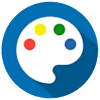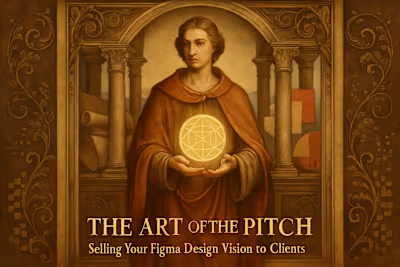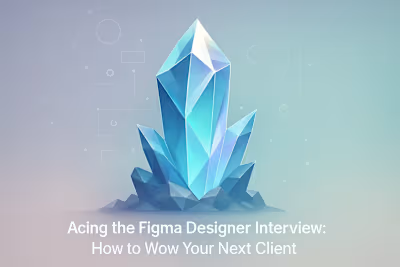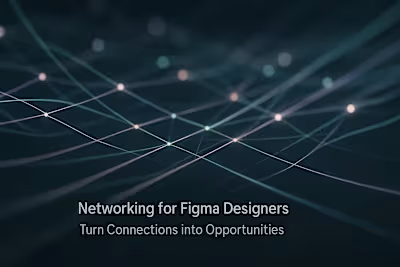AI vs. Human Designers: Who Should You Hire in 2025?
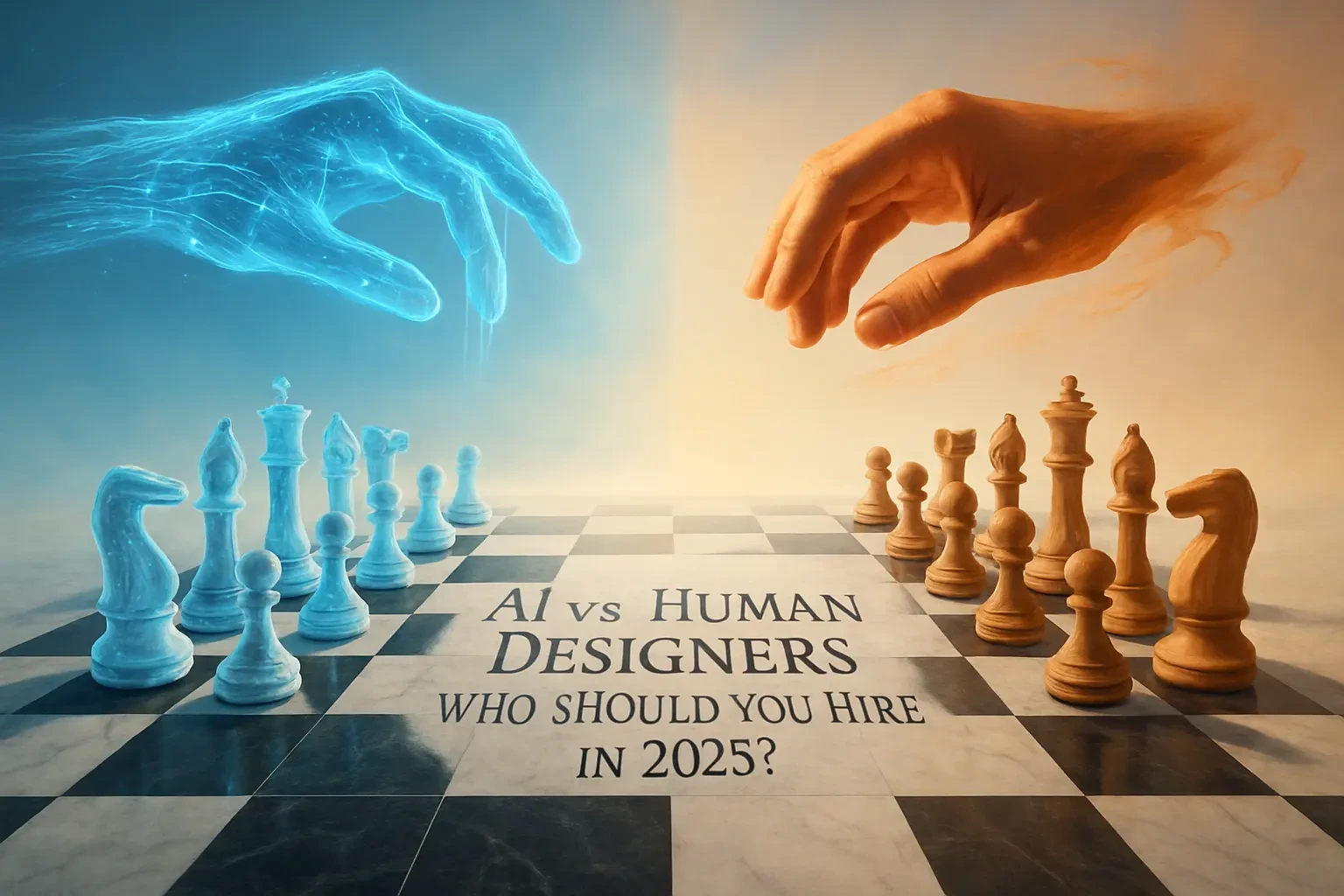
AI vs. Human Designers: Who Should You Hire in 2025?
The Rise of AI in the Design Space
Automating Repetitive Tasks
Generative Design and Rapid Prototyping
What AI Can't Replace: The Human Element
Emotional Intelligence and Empathy
Strategic Thinking and Problem-Solving
Creativity and Originality
How to Adapt Your Hiring Strategy for the AI Era
Identifying AI-Literate Designers
Prioritizing Soft Skills
Conclusion: The Collaborative Future of Design
References
AI vs. Human Designers: Who Should You Hire in 2025?
The rise of powerful AI design tools like Midjourney and DALL-E has sparked a critical debate: will AI make human designers obsolete? For hiring managers, this isn't a distant future scenario; it's a pressing question for 2025. As technology evolves, so does the nature of design work, creating roles for designer-developers who bridge the gap between concept and code. This article explores the current capabilities of AI in design, the irreplaceable value of human creativity, and how to find the right talent. When you need to hire Figma designers, understanding this new landscape is crucial to building a future-proof team.
The Rise of AI in the Design Space
Remember when creating professional designs required years of training and expensive software? Those days are fading fast. Today's AI tools are transforming how we approach design work, making certain tasks faster and more accessible than ever before.
Take Midjourney, for instance. This AI powerhouse can generate stunning visuals from simple text descriptions. Need a logo for a tech startup? Type in "minimalist tech logo with geometric shapes" and watch dozens of options appear in seconds. Adobe Firefly brings similar capabilities directly into Creative Cloud, while Framer AI can build entire website layouts from rough sketches.
But here's what's really interesting: these tools aren't just party tricks. They're fundamentally changing design workflows. Designers who once spent hours on initial concepts now use AI to generate starting points in minutes. The technology excels at what computers do best—processing vast amounts of data and recognizing patterns—while leaving the nuanced decision-making to humans.
Automating Repetitive Tasks
Let's face it: a lot of design work is tedious. Resizing images for different social media platforms? Mind-numbing. Removing backgrounds from product photos? Time-consuming. Creating color variations of the same design? Repetitive.
This is where AI shines brightest. Modern AI tools handle these tasks with impressive accuracy. Background removal that once took 20 minutes in Photoshop now happens instantly. Need 50 variations of a banner ad? AI generates them while you grab coffee.
The real win here isn't just time saved—it's mental energy preserved. When designers aren't bogged down by repetitive tasks, they can focus on what actually matters: solving problems, crafting experiences, and pushing creative boundaries. Smart companies recognize this shift and look for designers who leverage AI for efficiency, not those who waste time on tasks a computer can handle.
Generative Design and Rapid Prototyping
Here's where things get really exciting. AI doesn't just automate; it generates. Feed it a prompt like "modern e-commerce homepage for sustainable fashion brand" and watch it produce dozens of unique layouts. Each one different, each one a potential starting point for something great.
This capability transforms the ideation phase completely. Instead of starting with a blank canvas, designers can explore hundreds of AI-generated concepts quickly. They become curators and refiners rather than creators from scratch. It's like having an infinitely creative (if somewhat unpredictable) junior designer on your team.
The prototyping process benefits enormously too. What used to take days—creating multiple design directions for client presentations—now happens in hours. Designers can show clients ten different approaches instead of three, leading to better feedback and stronger final products.
What AI Can't Replace: The Human Element
Now for the reality check. Despite all the hype, AI has significant limitations. It's brilliant at pattern recognition and generation, but it lacks something fundamental: understanding. AI doesn't know why a design works—it only knows that similar designs have worked before.
Think about your favorite brand experiences. The ones that stick with you, that make you feel something. Behind each one is a human designer who understood not just pixels and colors, but people and emotions. They grasped the subtle cultural references, the unspoken user needs, the business strategy behind the brief.
This human element becomes more valuable, not less, as AI proliferates. In a world where anyone can generate professional-looking designs, the ability to create meaningful ones sets professionals apart.
Emotional Intelligence and Empathy
Great design isn't just about looking good—it's about feeling right. When Airbnb redesigned their platform, they didn't just make it prettier. They understood the emotional journey of both hosts and guests: the excitement of planning a trip, the anxiety of staying in a stranger's home, the joy of discovering a new place.
AI can mimic successful design patterns, but it can't understand why a nervous first-time traveler needs reassurance at specific touchpoints. It doesn't grasp why certain colors evoke trust in Western markets but skepticism in others. These insights come from human experience and empathy.
Consider accessibility design. While AI can check contrast ratios and font sizes, it takes human understanding to design for someone with dyslexia or anxiety disorders. Real empathy drives inclusive design, something no algorithm can replicate. The designers who thrive in 2025 will be those who combine AI's efficiency with deep human understanding.
Strategic Thinking and Problem-Solving
Every experienced designer knows this scenario: the client says they want "something modern and fresh" but their brand guidelines scream traditional. The brief asks for increased conversions but also demands a minimalist aesthetic. The stakeholders can't agree on the target audience.
This is where human designers earn their keep. They navigate contradictions, decode vague requirements, and find solutions that satisfy multiple constraints. They ask the right questions: "When you say modern, do you mean minimalist or tech-forward?" They push back when needed: "This approach might look cool, but will it actually help your users?"
AI operates on clear inputs and defined parameters. It can't read between the lines of a poorly written brief or navigate office politics to get buy-in on a bold design direction. Strategic thinking—understanding not just what to design but why and for whom—remains firmly in human territory.
Creativity and Originality
Here's an uncomfortable truth about AI: it can only create variations of what already exists. Every stunning image from Midjourney, every layout from Framer AI, is essentially a sophisticated remix of existing designs. Original ideas—truly new concepts that push boundaries—still require human imagination.
Think about breakthrough designs that changed industries. The iPhone's interface wasn't an iteration on existing phone designs; it reimagined what a phone could be. Spotify's discovery features didn't just improve music browsing; they transformed how we relate to music. These leaps require human insight, cultural understanding, and the courage to try something genuinely new.
The designers who'll command top rates in 2025 won't be those who can operate AI tools—that'll be table stakes. They'll be the ones who use AI as a launching pad for original thinking, who can see beyond what's been done to imagine what could be.
How to Adapt Your Hiring Strategy for the AI Era
So you're convinced that human designers still matter, but you also recognize AI's growing importance. How do you hire for this hybrid future? The key is finding designers who see AI as a powerful collaborator, not a threat or a crutch.
Start by rethinking your job descriptions. Instead of listing software proficiencies (which change constantly), focus on problem-solving abilities and strategic thinking. Look for candidates who can articulate not just what they designed, but why they made specific choices.
The best designers in 2025 will be "design technologists"—professionals who understand both the creative and technical aspects of their craft. They'll use AI to explore possibilities faster, but they'll know when to take the wheel and drive the creative direction themselves.
Identifying AI-Literate Designers
Spotting designers who effectively use AI requires looking beyond their portfolio. Sure, the work should be strong, but you need to understand their process. During interviews, ask specific questions about their AI workflow.
"Walk me through a recent project where you used AI tools" reveals a lot. Do they use AI thoughtfully for specific tasks, or do they rely on it as a crutch? Can they explain when AI helped and when they needed to intervene? The best candidates will have clear examples of how AI amplified their creativity rather than replaced it.
Look for designers who experiment with multiple AI tools but aren't dependent on any single one. They should understand each tool's strengths and limitations. Portfolio pieces should show human refinement of AI-generated concepts, not just raw AI output. Ask to see their process work—the journey from AI generation to final design often reveals more than the polished result.
Red flags include portfolios filled with obvious AI-generated images without modification, inability to explain design decisions, or dismissive attitudes toward AI entirely. The future belongs to designers who embrace AI as a tool while maintaining their creative vision.
Prioritizing Soft Skills
Technical skills can be taught; soft skills are harder to develop. In an AI-augmented world, human skills become the key differentiator. Communication tops the list—designers must articulate ideas to stakeholders who might be skeptical of AI-assisted work.
Collaboration skills matter more than ever. Modern design teams include developers, product managers, and yes, AI tools. Designers need to work effectively across these boundaries, translating between technical possibilities and human needs. They should be comfortable with ambiguity and change, as AI capabilities evolve rapidly.
Critical thinking becomes essential. With AI generating endless options, designers must evaluate and choose wisely. They need to question AI suggestions, recognize biases in generated content, and know when to override algorithmic recommendations. Look for candidates who can explain their reasoning clearly and defend their design decisions with logic and empathy.
Adaptability rounds out the crucial soft skills. The designers who struggled to move from print to digital won't fare well in the AI transition. Seek professionals who view change as an opportunity, who stay curious about new tools while maintaining focus on user needs. The question isn't whether they use the latest AI tool—it's whether they can learn and adapt as the landscape shifts.
Conclusion: The Collaborative Future of Design
The debate between AI and human designers misses the point entirely. We're not heading toward a future where one replaces the other. Instead, we're entering an era of unprecedented collaboration between human creativity and machine efficiency.
AI excels at generating options, automating tedious tasks, and processing vast amounts of visual data. Humans bring empathy, strategic thinking, and the ability to create truly original solutions. The magic happens when these capabilities combine. A designer who leverages AI for rapid prototyping while applying human insight to refine and perfect the result will outperform both pure AI solutions and designers who ignore these tools.
For hiring managers, the path forward is clear. Don't ask whether to hire AI or human designers—that's the wrong question. Instead, focus on finding designers who masterfully orchestrate both. These professionals use AI to amplify their creativity, not replace it. They understand that in a world where anyone can generate decent designs with AI, the ability to create meaningful, strategic, and emotionally resonant work becomes even more valuable.
The most successful design teams of 2025 won't be those with the most advanced AI tools or the most traditional human-only approaches. They'll be teams that embrace the collaborative potential of human-AI partnership. As you build your team, look for designers who see AI as a powerful ally in their creative process—professionals who can harness technology while never losing sight of the human needs at the heart of great design.
The future of design isn't about choosing sides. It's about choosing wisely from the best of both worlds.
References
Like this project
Posted Jul 6, 2025
AI is reshaping the design landscape. Discover whether AI tools can replace human creativity and learn how to adapt your hiring strategy for 2025's challenges.





